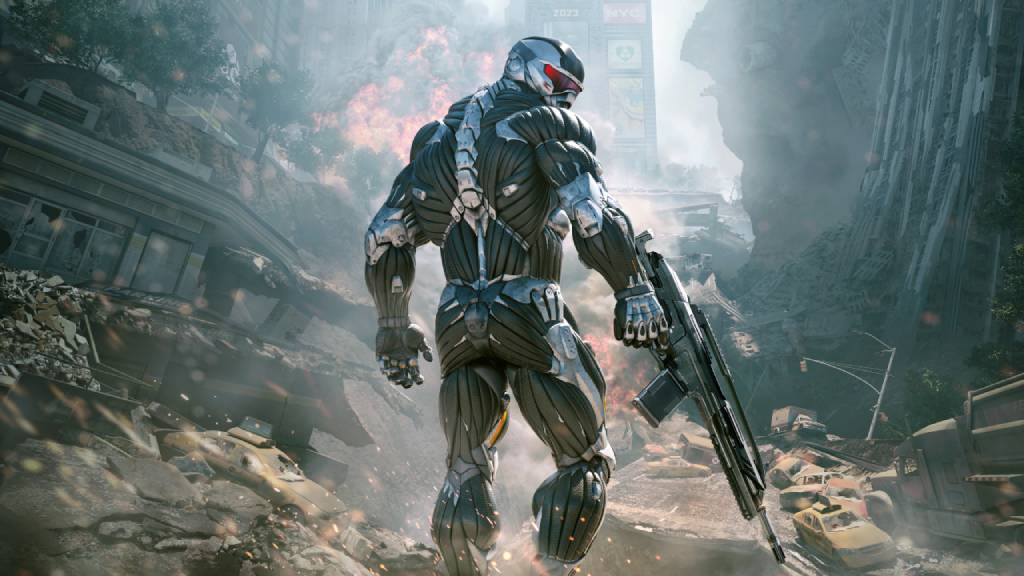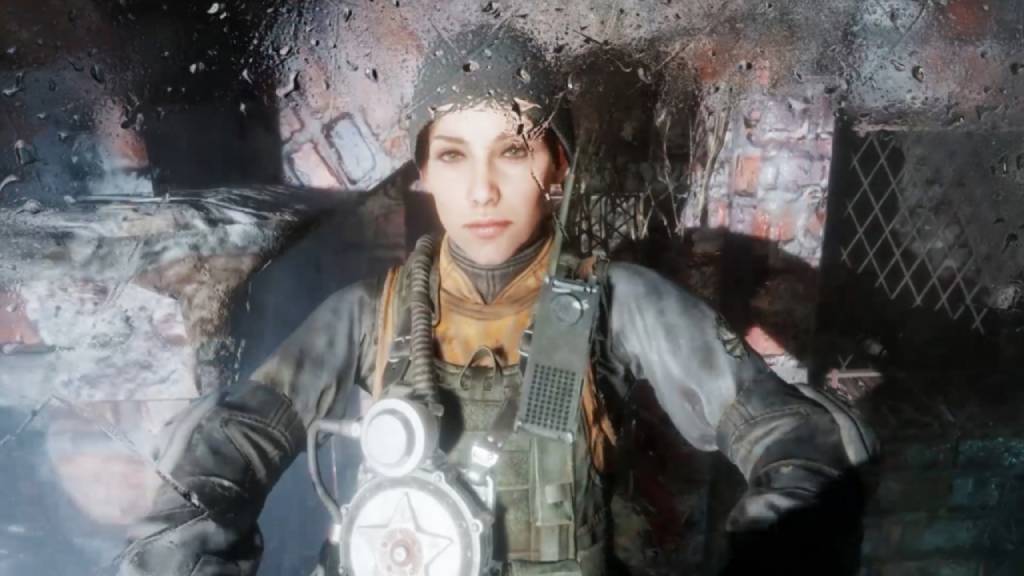To celebrate the best in graphical innovation, let’s look at seven games that were ahead of their time.
While it’s true that graphics aren’t the be-all-end-all when it comes to a great game, they’re certainly an important part of the experience. A game’s visuals are the best indicator of technological achievement – achievements that help significantly to immerse a player further into the experience.
To celebrate the best in graphical innovation, let’s look at seven games that were ahead of their time.
Shenmue
The Dreamcast was a revolutionary system for its time. Back when ‘bits’ were a meaningful metric, the Dreamcast made waves for being the first (and last) 128-bit system—the machine that kicked off the sixth generation of consoles.
Shenmue was SEGA’s killer app. With its unprecedentedly detailed open-world environments and killer next-gen graphics, it translated the Dreamcast’s specs into a visual feast.

The game brought about the advent of the open-world city – a concept the Grand Theft Auto series would go on to popularise. With its one-to-one replication of Yokosuka Japan, it boasted a level of realism that had never been achieved before. High-resolution characters and a high street packed with fully accessible buildings, dynamically changing time of day and weather, and martial arts motion capture that was second to none: Shenmue re-invented the wheel for what a game could be.
Environments – both interior and exterior – were meticulously designed, and you could pick up and individually examine hundreds of painstakingly detailed objects. A player couldn’t hold and rotate objects without proper hands, of course, so Shenmue was also one of the first games to have fully modeled and animated fingers. This was a huge difference from the ill-defined blobs that were used for hands in most games of the time.
Cutscenes looked incredible, straddling the line between cinema and video games like no other title had, and the game remained unmatched in graphical detail for some time after. Sega’s swan-song console might have been a commercial failure, but it certainly went out with a bang.
Red Dead Redemption 2
The planes of New Austin are possibly the most impressive and immersive open-world ever made, and a huge part of that accolade can be attributed to its graphical realism. Most impressive were the expansive vistas, which encapsulated a lush, natural environment teeming with life.
Sunlight chinks through the trees making each frame seem like an oil painting, a beauty that’s juxtaposed by the similarly impressively rendered thunderstorms. When the heavens open, the world changes accordingly to showcase the violence of the deluge. Footprints glisten in the mud, hyper-realistic trees shake violently, and the powerful anatomy of your horse is vividly augmented with dynamic lighting on wet fur.

Water ripples authentically dependent on the object floating through it, while traversing deep snow leaves behind a physically accurate trail. Facial animations were considerably stepped up as well, with characters being able to convey even the most subtle emotional nuance. The sunlight would even fracture translucently through the skin of a character’s ears: it’s called sub-dermal scattering, apparently. One could talk forever about the visual brilliance of Red Dead Redemption 2’s immersive world, but seeing is believing.
Crysis
Any veteran PC gamer will remember Crisis, the ultimate GPU tester. Built on the Cryengine, which was incredibly advanced for the time, it would be years after its 2007 release before fans could fully play the game.
It came at a time when individually reactive leaves on a palm tree were reserved for film-level CGI; Crysis baffled players with what looked like pre-rendered animation playing out in real-time. It was a huge leap in the way games used volumetric lighting and dynamic soft shadowing, delivering the most realistic natural environments that players had ever seen.

What’s more, virtually everything else in the environment reacted realistically to explosions and ballistic weapons: the player could shoot a tree and have it break and fall realistically at the point of impact, for example. This made for crazily chaotic firefights, which all looked and felt amazing.
When you’d stand atop a mountain and cast your gaze over an idyllic lagoon below, saturated in a deep orange sunset, it’d be easy to forget you were in the middle of a warzone. Crisis was a rarity in that it set out to be the most visually impressive game ever made, even if barely anyone could actually run it. As such, it’ll always be remembered as a bold, one-of-a-kind, era-defining title.
Donkey Kong Country
Coming at the end of the Super Nintendo’s lifespan, there was nothing on the system – or on 16-bit systems in general – that could match the visuals of Donkey Kong Country.
With pre-rendered 3D sprites and luscious backdrops featuring multiple layers of parallax scrolling, the game looked leaps and bounds above anything else that had been released on the system.
Seeing characters and objects reflect light realistically made the game take on the qualities of an animated film, and the backgrounds often had this incredible sense of depth and dimension despite a 16-bit framework.

Animations were also expertly articulated, exhibiting impressively fluid frame transitions that eclipsed most any other platformer.
From every wacky character in the Kong family to the huge variety of jungle critters the player must fight on their journey, everything was rendered in a thoroughly original style – something we now recognize as Rare’s unique charm.
Donkey Kong Country was a shining example of developers taking extremely limited hardware and pushing it to a point never thought possible.
Metro Exodus
The horrifyingly grim, post-apocalyptic world of the Republic of Kazakhstan is a dazzling achievement; it’s a frozen, radioactive wasteland, but damn does it look good! Metro Exodus brought a generational jump in graphics. It was the first game to use real-time Ray tracing, scattering, and diffusing light in a way that came closer to photorealism than any title had in the past.
It’s easy to rely solely on ray tracing to explain this game’s impressive appearance, but it’s more than that: the subtle blanket of realism ray tracing brings, in collaboration with an incredible environmental design, that makes the game stand out.

Whether you’re skulking through one of the deeply unsettling tunnel systems or braving the barren planes of the Republic’s dilapidated surface, Metro Exodus manages to use incredible graphics to showcase a visionary degree of eeriness.
The way plaster crumbles from a decaying wall or how torn fabric flutters in the harsh breeze – you can almost smell and taste the place on account of Exodus’s true-to-life visual depiction. The 4A engine also renders organic entities wonderfully.
Spot-on facial animations and character expressions deliver a strong emotional impact, while the sinewy translucence of mutant anatomy and integration of NVIDIA HairWorks make for some scarily realistic (and repulsive) adversaries. Metro Exodus’s graphical prowess deepened the horror of the post-apocalypse, making a place that was altogether dead seem nonetheless alive.
Half-Life 2
Half-Life 2 was the first time in-game physics was used to such a dynamic and functional degree.
Valve placed these mechanics at the center with the gravity gun, allowing the grabbing and launching of objects with ease. This meant that boxes, building surfaces, and barrels would all feature realistic reactions to being hit at a high velocity.
The way HL2 rendered the slinging and smashing of gameworld objects made for some of the most visually impressive combat on the market, which was helped along by cutting-edge water and fire simulations at the time.

The game also impressively used high dynamic range (HDR) and dynamic tone mapping to bring its environments to life.
Perhaps most impressive in the graphics department, though, were the facial animations. Faces have long been difficult to get right in a game. Even today, a title with stunning overall graphics can break the immersion with awkward-looking facial movements, but in 2004, Half-Life 2 managed to nail it. Faces moved as they would in real life, skin creased in the places it was supposed to, and characters could express every possible emotion thanks to the versatility of the Source engine.
Valve uses Half-Life games to push the industry forward, and Half-Life 2 raised the bar for every AAA game to come after it.
DOOM
The developers at Id Software were computer geniuses for what they accomplished with the original DOOM. They managed to make a computer essentially fake the third dimension, although the game itself technically is a 2D title.
John Carmack, the lead programmer on the game, used a method called Binary Space Partitioning to make a 2D engine look like it was displaying 3D. Levels were designed as they would be on a 2D sheet of graph paper, which the computer would then chop up into smaller, more manageable portions that the processor could render efficiently.

Id Software’s revolutionary handling of graphics gave birth to the first-person shooter as we know it and paved the way for the creation of more immersive 3D worlds in the future.
1993 saw other 3D games launch, like Star Fox and Virtua Fighter, which used actual polygons, but nothing used the hardware of the time to capture the feeling of a 3D space like DOOM.
It was fast, frantic, addictive, and perhaps the best example of a game that revolutionized gameplay through graphical innovation.
These seven games contributed to the level of graphical fidelity we enjoy today, but they represent only a fraction of the games that did.
This is by no means an exhaustive list, so what games do you feel are deserving of praise for their graphics? Let us know in the comments below.















